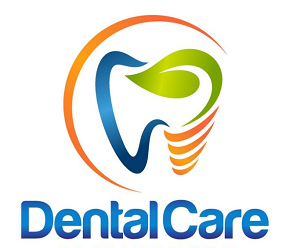1 Aug, 2022 | Edward Bramston | No Comments
Steps to Minimize Damage Before Reaching an Emergency Dentist

Introduction
Experiencing a dental emergency can be a stressful and painful situation. Whether it’s a severe toothache, a broken tooth, or any other dental issue that requires immediate attention, knowing how to minimize damage before reaching an emergency dentist can make a significant difference in your oral health and overall well-being. In this blog post, we will discuss some essential steps you can take to alleviate discomfort and prevent further damage until you can see a professional.
1. Stay Calm and Assess the Situation

When faced with a dental emergency, it’s important to stay calm and assess the situation. Take a moment to evaluate the severity of the problem and determine if immediate action is required.
2. Control Bleeding
If you are experiencing bleeding, it’s crucial to control it as soon as possible. Rinse your mouth with warm saltwater and apply gentle pressure to the affected area using a clean cloth or gauze pad. This will help minimize bleeding and prevent further complications.
3. Manage Pain and Swelling
If you are in pain or experiencing swelling, over-the-counter pain relievers can provide temporary relief. Avoid aspirin as it can increase bleeding. Applying a cold compress to the affected area can also help reduce swelling and alleviate discomfort.
4. Preserve Dislodged Teeth
If a tooth has been knocked out, handle it carefully by the crown (the top part) and avoid touching the root. Rinse the tooth gently with water, but do not scrub or remove any attached tissue. If possible, try to reinsert the tooth into its socket and hold it in place. If this is not possible, place the tooth in a container of milk or saliva to keep it moist until you can see a dentist.
5. Protect Cracked or Chipped Teeth
If you have a cracked or chipped tooth, rinse your mouth with warm saltwater to clean the area. Avoid eating or drinking anything that can further damage the tooth, such as hard or sticky foods. Cover the sharp edges of the tooth with dental wax or sugarless gum to prevent injury to your tongue or cheeks.
6. Address Lost Fillings or Crowns
If a filling or crown has fallen out, try to keep the area clean by rinsing with warm saltwater. You can temporarily fill the cavity with dental cement or sugarless gum to protect the exposed tooth until you can see a dentist.
7. Handle Orthodontic Emergencies
If you have braces or other orthodontic appliances and experience an emergency, such as a broken wire or loose.
Summary
When faced with a dental emergency, it’s crucial to act quickly and take the necessary steps to minimize damage before reaching an emergency dentist. Here are some key points to remember:
- Stay calm and assess the situation.
- If you have a severe toothache, rinse your mouth with warm saltwater and use over-the-counter pain relievers.
- If a tooth is knocked out, handle it carefully by the crown, rinse it with water, and try to reinsert it into the socket.
- If a tooth is broken or chipped, rinse your mouth with warm water and save any broken pieces.
- If you experience swelling, apply a cold compress to the affected area.
- Contact an emergency dentist as soon as possible to schedule an appointment.
- Follow any additional instructions provided by the dentist.
Remember, these steps are temporary measures to minimize damage and alleviate discomfort until you can receive professional dental care. It’s essential to seek immediate attention from an emergency dentist to ensure proper treatment and prevent further complications. By taki view ng prompt action and following these steps, you can protect your oral health and increase the chances of a successful dental emergency resolution.
- Q: What should I do if I have a dental emergency?
- A: If you have a dental emergency, it is important to remain calm. Contact an emergency dentist as soon as possible to schedule an appointment.
- Q: How can I minimize damage before reaching an emergency dentist?
- A: There are several steps you can take to minimize damage before reaching an emergency dentist:
- Apply a cold compress to reduce swelling or alleviate pain.
- If a tooth is knocked out, try to gently place it back into the socket or store it in a container of milk or saliva until you can see the dentist.
- If a filling or crown falls out, you can use dental cement or temporary dental adhesive to temporarily reattach it.
- If you have a toothache, rinse your mouth with warm saltwater and use dental floss to remove any food particles that may be causing the pain.
- If there is bleeding, apply gentle pressure with a clean cloth or gauze to control it.
- Q: Should I take pain medication before seeing an emergency dentist?
- A: It is generally safe to take over-the-counter pain medication, following the recommended dosage, to alleviate dental pain before seeing an emergency dentist. However, it is important to consult with a healthcare professional or pharmacist before taking any medication.
- Q: Can I eat or drink before visiting an emergency dentist?
- A: It is best to avoid eating or drinking anything before visiting an emergency dentist, especially if you have a dental issue that may require immediate treatment. However, if you need to eat or drink, choose soft foods and avoid hot or cold beverages.
- Q: What should I bring with me to the emergency dentist appointment?
- A: When visiting an emergency dentist, it is important to bring:
- Your identification and insurance information.
- A list of any medications you are currently taking.
- If applicable, any X-rays or dental records related to your emergency.

Welcome to my website! My name is Edward Bramston, and I am a dedicated Dental Anesthesiologist with a passion for providing exceptional care to patients of all ages. With years of experience in the field, I have developed a deep understanding of the importance of dental emergencies, children’s dentistry, and nutrition for oral health.
